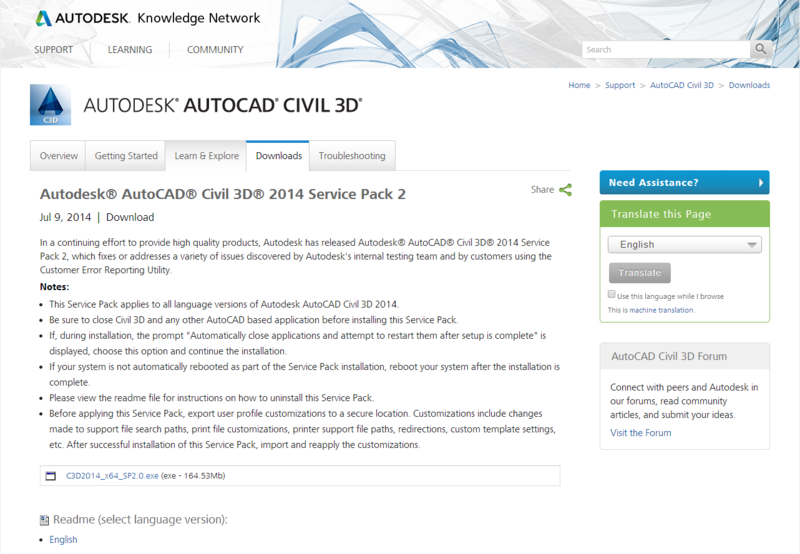

To find out the specifics just head over to the Autodesk Website. Like I said you don't have to do this but it is recommended by Autodesk in order for your update to run smoothly. This ranges from backing up all custom files to using the deployment wizard to rebooting your system etc. Now, many of you have probably read one of these posts before so you know the drill but stay tuned for the added bit at the end for the offer we have on that is ending soon.įirst things first - to install the Autodesk Civil 3D service update you need to (not that this is in anyway mandatory) do a few things. After successful installation of this Service Pack, import and reapply the customizations.Updates, updates, updates galore! Everyone loves new features being added, changed and fixed and with the release of the Service Pack 2 for Autodesk Civil 3D you are in for a few treats which will make your user experience a lot easier and way more enjoyable.

Customizations include changes made to support file search paths, print file customizations, printer support file paths, redirections, custom template settings, etc. Before applying this Service Pack, export user profile customizations to a secure location.Please view the readme file for instructions on how to uninstall this Service Pack.If your system is not automatically rebooted as part of the Service Pack installation, reboot your system after the installation is complete.If, during installation, the prompt "Automatically close applications and attempt to restart them after setup is complete" is displayed, choose this option and continue the installation.Be sure to close Civil 3D and any other AutoCAD based application before installing this Service Pack.This Service Pack applies to all language versions of Autodesk AutoCAD Civil 3D 2014.


In a continuing effort to provide high quality products, Autodesk has released Autodesk® AutoCAD® Civil 3D® 2014 Service Pack 2, which fixes or addresses a variety of issues discovered by Autodesk's internal testing team and by customers using the Customer Error Reporting Utility.


 0 kommentar(er)
0 kommentar(er)
